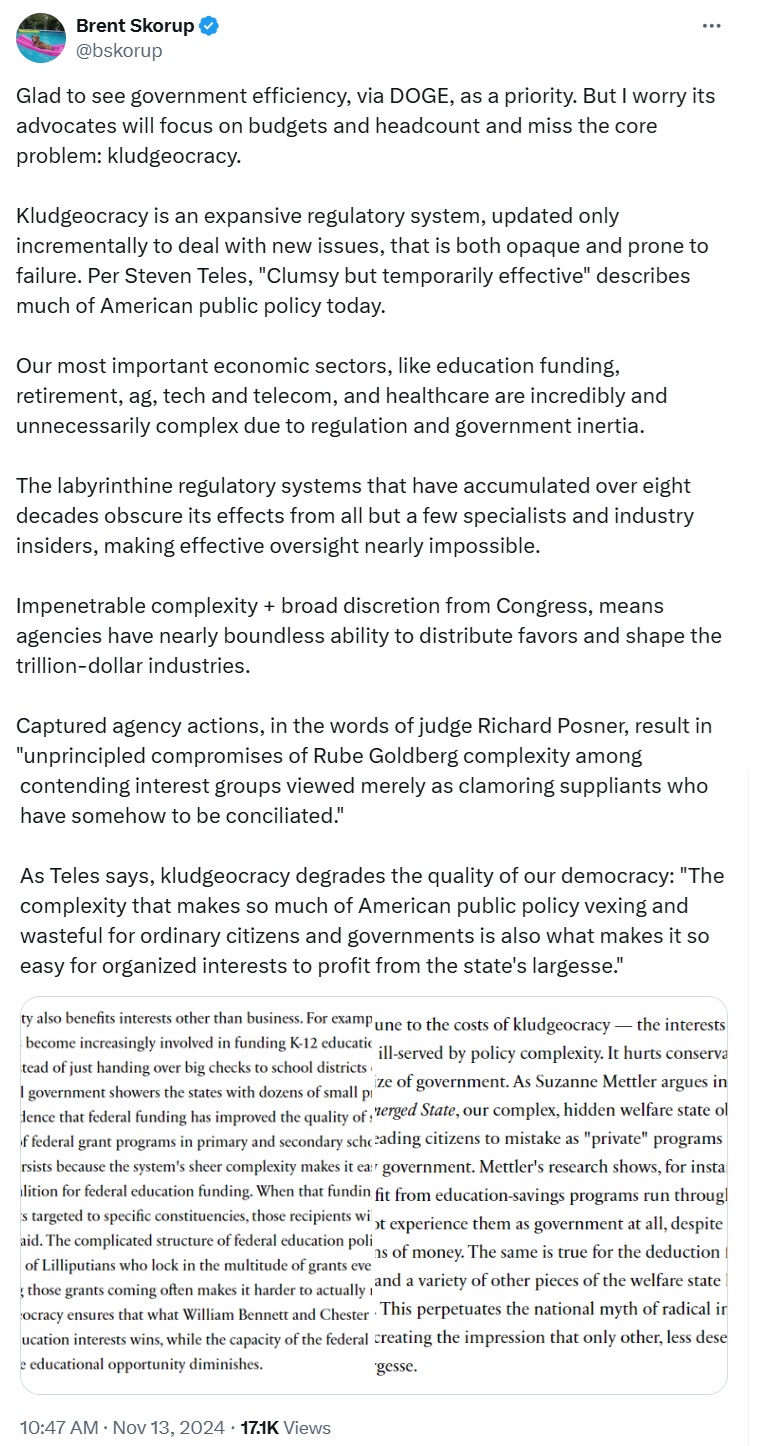Back in August, I shared a chart showing that nearly 100 percent of America’s 30-year deficit was because of Social Security and Medicare.
Well, Brian Riedl of the Manhattan Institute has unveiled the 2024 version of his Chartbook and we now see that those two entitlements are responsible for more than 100 percent of the federal government’s fiscal shortfall.

I’m sharing the new version of the chart because Donald Trump is proposing a new Department of Government Efficiency (DOGE).
That sounds like an oxymoron, but it may be an opportunity to create momentum for much-needed spending restraint.
In a story for the New York Times, Michael Shear and Eric Lipton explain what has happened.
Mr. Trump said on Tuesday that Elon Musk and Vivek Ramaswamy will lead what he called the Department of Government Efficiency. It will be, he said, “the Manhattan Project” of this era, driving “drastic change” throughout the government with major cuts and new efficiencies in bloated agencies in the federal bureaucracy by July 4, 2026. …The statement left unanswered all kinds of major questions about an initiative that is uncertain in seriousness but potentially vast in scope. For starters, the president-elect did not address the fact that no such department exists. And he did not elaborate on whether his two rich supporters would hire a staff for the new department, which he said is aimed in part at reducing the federal work force.
For what it’s worth, Musk and Ramaswamy seem genuine in their desire to use DOGE to do the right thing.
Slashing government regulations and spending became a top priority for Mr. Musk as his frustrations have grown, particularly this year, with what he considers excessive or redundant oversight by the Federal Aviation Administration and the Interior Department, as SpaceX sought launch licenses to continue testing its newest rocket called Starship. …As part of his message, Mr. Ramaswamy vowed to help take Mr. Trump’s promise to cut government even further. He proposed immediately eliminating the Education Department, the F.B.I. and the Internal Revenue Service by executive order. He said the federal work force should be cut by 75 percent in a mass layoff.
I appreciate boldness, even if some of the ideas are impractical (I don’t like the Department of Education or Internal Revenue Service, but I’m not aware of any practical way of eliminating those bureaucracies by an executive order).
That being said, my main concern is connected with the chart at the beginning of this column. America’s top fiscal problem is entitlements, and if Trump doesn’t change his mind about potential reforms to those programs, there is no way to climb out of our fiscal hole.
Yes, it will be great if the DOGE leads to Medicaid reform and/or shutting down the Department of Housing and Urban Development, so I won’t make the perfect the enemy of the good.
But I also won’t pretend that solving, say, 30 percent of the problem represents total victory.
P.S. I’ll close by stating that the proposed Department of Government Efficiency will seek to make government smaller, but also try to make it less inefficient.
That will be the topic of future columns, I’m sure, but here’s a tweet to give you an idea why streamlining also is important.

For what it’s worth, I think making government smaller and making it less inefficient are connected goals. Research from the European Central Bank has shown that bigger governments have lower levels of “public-sector efficiency.”
P.P.S. And the International Monetary Fund has shown that decentralized governments have a better track record of “efficiency of public service delivery.”


